From pride to 'hellfire,' 'Flower Moon' sparks complicated emotions from Indigenous viewers
Martin Scorsese's long-awaited movie "Killers of the Flower Moon" debuted in theaters to rave reviews, an “A-” CinemaScore from audiences and ample Academy Awards buzz.
But for Osage Nation members and other Native Americans — including some who worked on the $200 million fact-based epic — seeing the film has stirred complicated emotions.
"I'm glad our story has been told to the whole world. ... I'm glad that Osages were consulted and involved in the movie process — so many extras that were Osages are in the movie. So, all that is phenomenal," said Danette Daniels, an Osage citizen who worked behind-the-scenes on the film and appeared in a dance sequence featuring hundreds of the tribe's members.
"I know Scorsese wanted to leave the feeling with the audience that the Osage are still a strong and vibrant, resilient community. So, I hope people have that takeaway. I would have liked to see more close-ups of the dancers ... But he's the artist. He's the one telling the story."
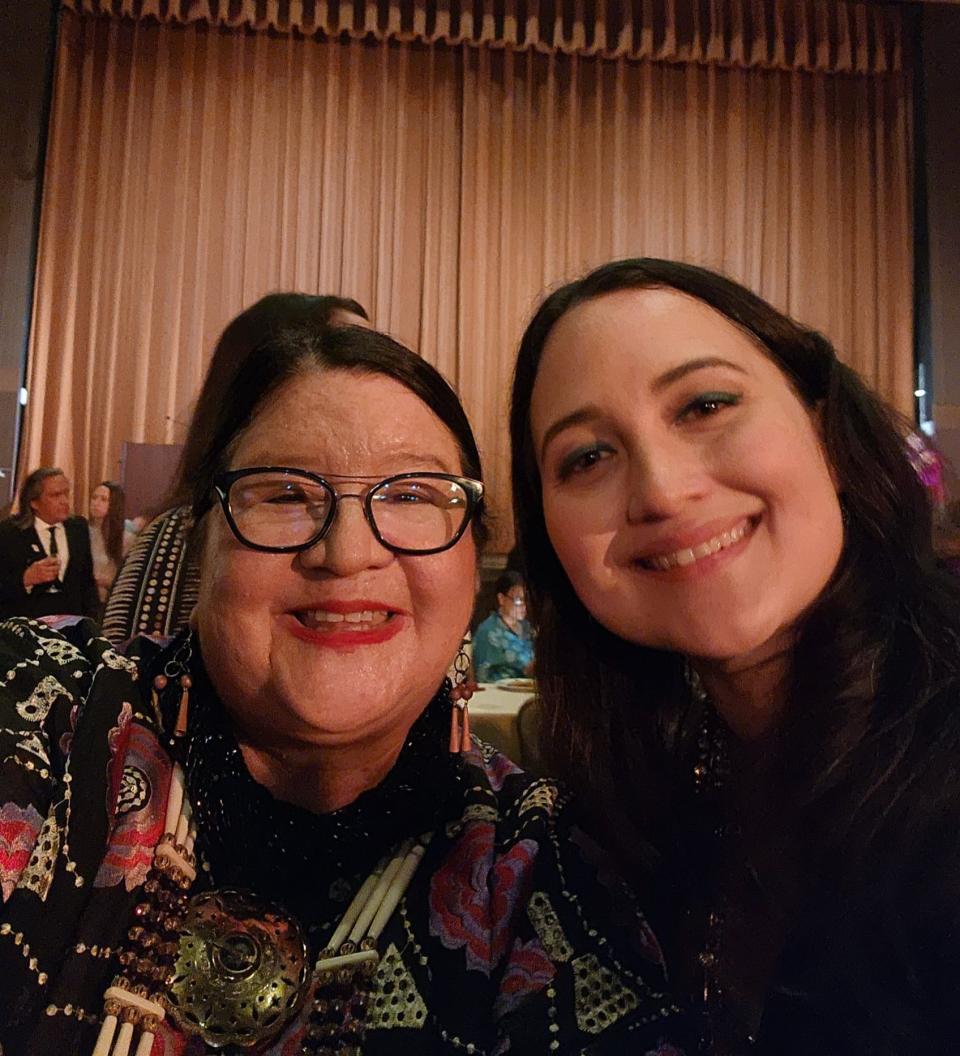
The question of whose story "Killers of the Flower Moon" is to tell — and the reality of who gets to make a big-budget historical drama like Scorsese's — is at the heart of many Indigenous people's conflicted reactions to the three and a half-hour movie.
"There are a lot of mixed feelings. Absolutely. ... That this is about this history is extraordinary," said Oklahoma City filmmaker Sunrise Tippeconnie, an enrolled member of the Comanche Nation who is also Navajo and Cherokee.
"But I would like it to happen where a studio will give $100 million or higher to a person of color, or a background that is underrepresented. But it feels like that's not happening right now, which is unfortunate."
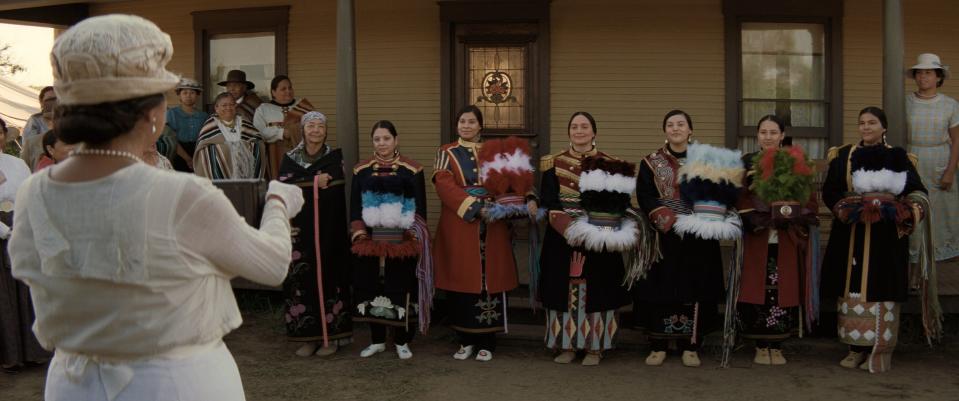
'Killers of the Flower Moon' reveals dark chapter of Osage history
"Killers of Flower Moon" has put on global movie screens a dark and often-overlooked chapter of Oklahoma history: The 1920s "Reign of Terror," the serial murders of Osage Nation citizens, who had become the richest people in the world per capita in an oil boom.
The movie focuses on Mollie Kyle Burkhart (Lily Gladstone, who is NiMíiPuu, or Nez Perce, and Siksikaitsitapi, or Blackfeet) a real-life Osage woman who lived near Fairfax. During the Reign of Terror, Mollie and her family were marked for death in a scheme to swindle away their oil money, which was masterminded by ruthless local rancher William K. Hale (Oscar winner Robert De Niro).
An executive producer on the film, Oscar winner Leonardo DiCaprio portrays Mollie's treacherous husband, Ernest Burkhart, a shiftless World War I veteran caught between his love for his wife and the powerful influence of Hale, his uncle.
Filmed in and around Osage County in 2021, Scorsese's film is adapted from David Grann's 2017 best-seller “Killers of the Flower Moon: The Osage Murders and the Birth of the FBI."
As the New York author has acknowledged, Grann wasn't the first person to write a book on the Reign of Terror. Chickasaw writer Linda Hogan delved into the tragic history with her 1991 novel "Mean Spirit," as did Osage authors Dennis McAuliffe Jr. with his 1994 book "The Deaths of Sybil Bolton" and Charles Red Corn with his 2005 novel "A Pipe for February."
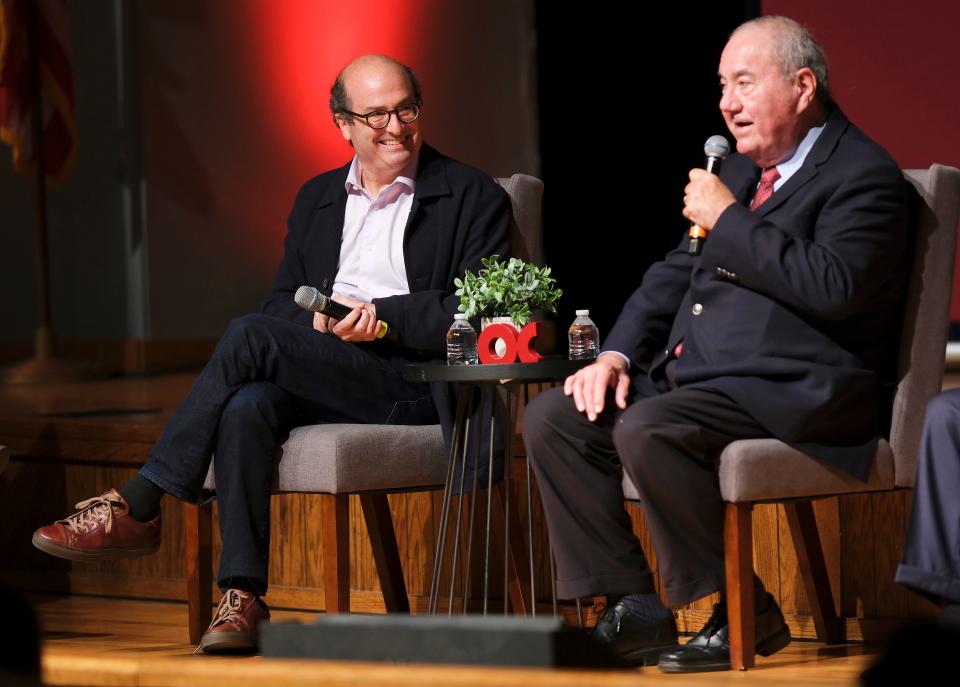
But it was Grann's book that set off a Hollywood bidding war before it was even published.
"When Imperative (Entertainment in 2016) purchased the rights from David Grann for the book, we emphasized that we needed our Osage culture and language to be told by us and not someone else," Osage Nation Principal Chief Geoffrey Standing Bear told The Oklahoman.
"So, we opened up our programs to them, our language speakers worked very closely with the actors and directors, and did a great job. Our traditional people worked with their costume people. ... I can speak for all of us saying that it's authentic."
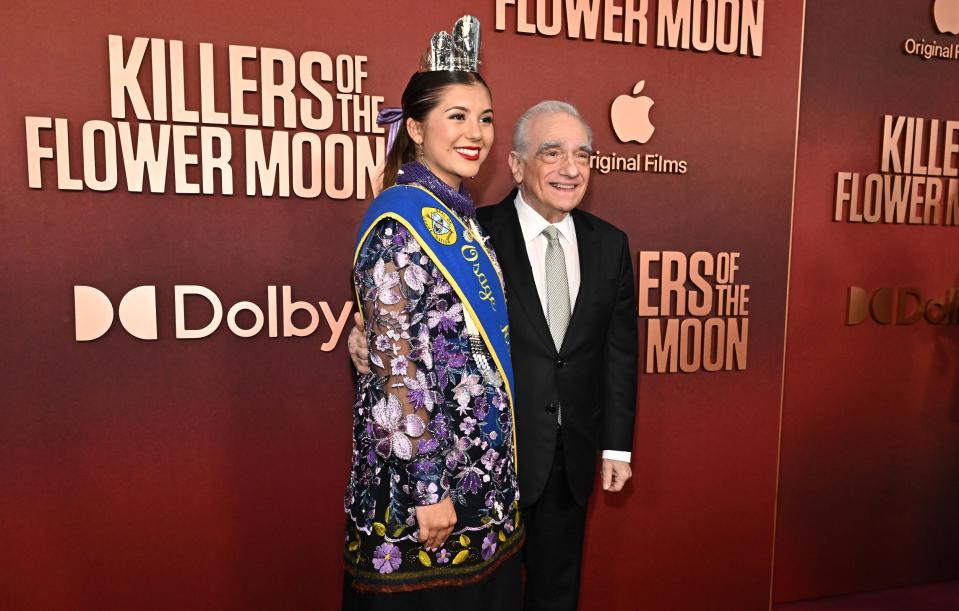
Despite chief's praise, some Osages express mixed emotions about Scorsese’s film
While Standing Bear has praised the efforts of the "Killers of the Flower Moon" team, as well as the final film, Osage language consultant Christopher Cote went viral at the L.A. premiere when he shared with The Hollywood Reporter on the red carpet his opinions about the movie.
At the film’s premiere, Osage language consultant Christopher Cote shares his complicated feelings about #KillersOfTheFlowerMoon pic.twitter.com/DKR0KcsLTs
— The Hollywood Reporter (@THR) October 17, 2023
“As an Osage, I really wanted this to be from the perspective of Mollie and what her family experienced, but I think it would take an Osage to do that,” Cote said.
"Martin Scorsese, not being Osage, I think he did a great job representing our people. But this story is being told, this history is being told, almost from the perspective of Ernest Burkhart. And they kind of give him this conscience and kind of depict that there’s love. But when somebody conspires to murder your entire family, that’s not love. That’s not love — that’s just beyond abuse.”
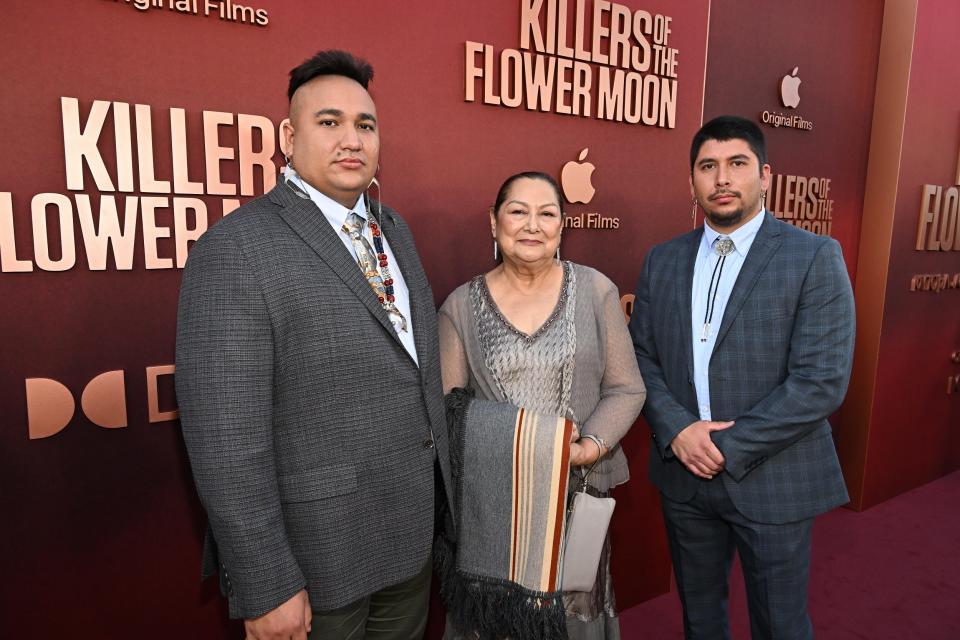
Cote added that the movie "isn’t made for an Osage audience; it was made for everybody not Osage."
"I think, in the end, the question that you can be left with is how long will you be complacent with racism?" he said.
For fellow Osage Daniels, Scorsese's film didn't go far enough in uncovering the racism of the guardianship system. In 1921, the U.S. government mandated that the Osage people were incapable of managing their own wealth. For no other reason than that they were Osage, adults were assigned court-appointed white guardians who often cheated tribal members out of large sums — or conspired to kill them so they could take their whole fortune.
"I'm still not happy at all about ... how that wasn't gone more into detail," Daniels said. "Of course, having the story told in our own voice would have been the very best. But at this time in history, it's a slow process."
"Martin Scorsese is extremely famous and talented, and he's an artist — and so he's the one telling our story. But thankfully, he heavily involved Osages in the process. So, we've come a long way — we've come a very long way — from the 1950s stereotypes."
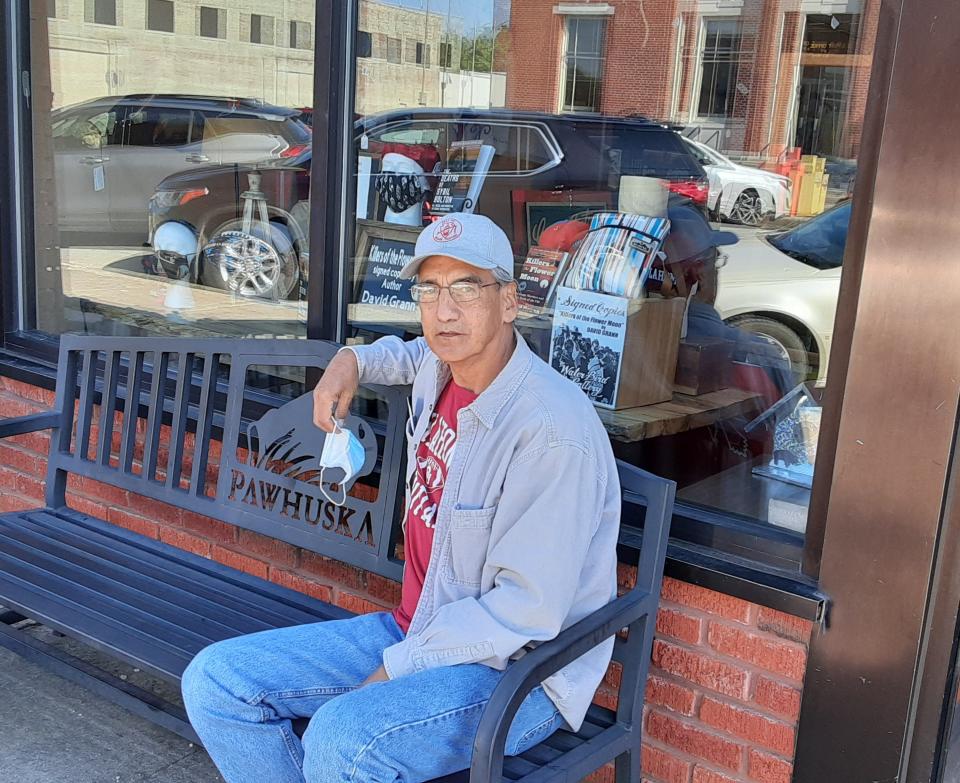
'There were true Indians everywhere,' Osage performer says of 'Killers of the Flower Moon'
Although he already had seen the movie at a summer screening for Osages who worked on it, Harrison Shackelford celebrated his 67th birthday by seeing "Killers of the Flower Moon" again on its opening weekend. Even with his speaking role getting cut, the Pawhuska resident, who is Osage, said he's happy with the movie.
"One of the shots was at the train depot, everybody was dressed up ... and it was just amazing," recalled Shackelford, who appeared as a background performer in the scene along with his granddaughter, brother and two of his brother's children.
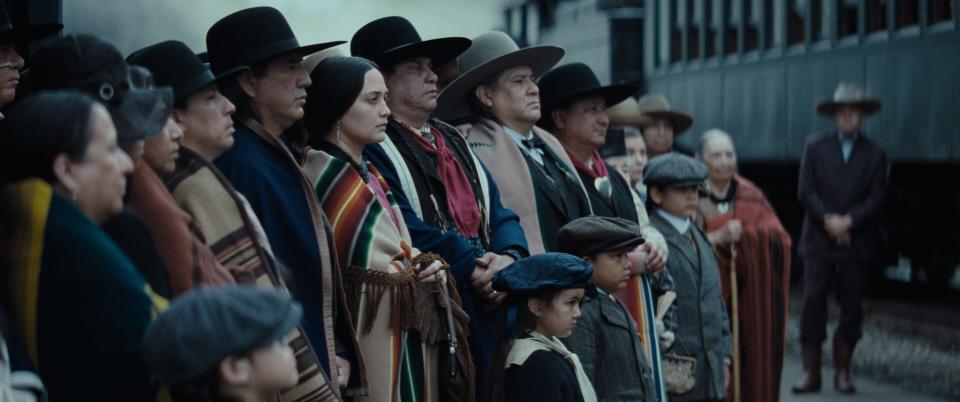
"With the exception of Mr. Scorsese and maybe Leonardo, it was all Indians — true Indians. There were just true Indians everywhere. There were no people made up to look like Indians ... and there must have been 200 or maybe 150 people."
Seeing the Osage all portrayed by real Native performers was much different from the movies he grew up with. He recalled when Lithuanian American Charles Bronson, then known as Charles Buchinsky, played a Native warrior in the 1954 Western "Apache," alongside Irish American star Burt Lancaster, who was again portraying an Indigenous hero after playing the title role in 1951's "Jim Thorpe – All-American."
"I think Chuck Connors played Geronimo, too. But it's just the way it was," Shackelford said. "Now, they use real Indians. … It's a big deal, and it's good to see that."

'Reservation Dogs' star blasts film as 'painful, grueling, unrelenting and unnecessarily graphic'
Although Shackelford acknowledged that some of the graphic violence was hard to watch, "Reservation Dogs" star Devery Jacobs went viral on X (formerly Twitter) with a series of posts blasting Scorsese's movie as "painful, grueling, unrelenting and unnecessarily graphic." She criticized Scorsese and co-writer Eric Roth for creating "Osage characters (that) felt painfully underwritten, while the white men were given way more courtesy and depth."
I HAVE THOUGHTS. I HAVE STRONG FEELINGS.
This film was painful, grueling, unrelenting and unnecessarily graphic.
A thread. ?? pic.twitter.com/THxucE9TkZ— Devery Jacobs (@kdeveryjacobs) October 23, 2023
"Being Native, watching this movie was f---ing hellfire. ... I get the goal of this violence is to add brutal shock value that forces people to understand the real horrors that happened to this community, BUT — I don’t feel that these very real people were shown honor or dignity in the horrific portrayal of their deaths," wrote Jacobs, 30, an Indigenous Canadian (Mohawk) writer and performer.
"This is the issue when non-Native directors are given the liberty to tell our stories; they center the white perspective and focus on Native people’s pain."
Jacobs praised the performances of Gladstone and the movie's other Indigenous actors, as well as the work done by Osage people on the film.
"I can imagine how cathartic it is to have these stories and histories finally acknowledged, especially on such a prestigious platform. ... But admittedly, I would prefer to see a $200 million movie from an Osage filmmaker telling this history, any day of the week," she wrote.
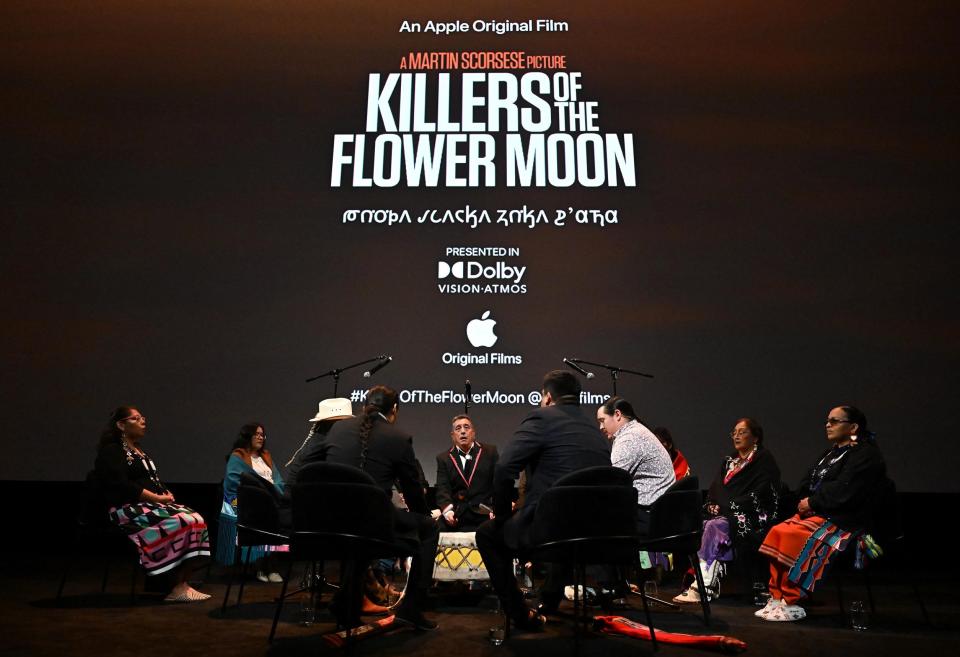
'Killers of the Flower Moon' doesn't have 'a monopoly on this history,' says Native filmmaker
The programming director for OKC's deadCenter Film Festival, Tippeconnie said the just-ended "Reservation Dogs" — made in Oklahoma and co-created and executive produced by Sterlin Harjo, a Tulsa-based filmmaker who is Seminole and Muscogee, and Taika Waititi, an Oscar-winning New Zealand moviemaker of Maori ancestry — has raised the bar for Native storytelling.
It was the first mainstream television series on which every writer, director and series regular performer was Indigenous, proving that having an array of Native talent "above-the-line" — or in positions to guide the creative direction of productions — is not only possible but can lead to first-rate storytelling.
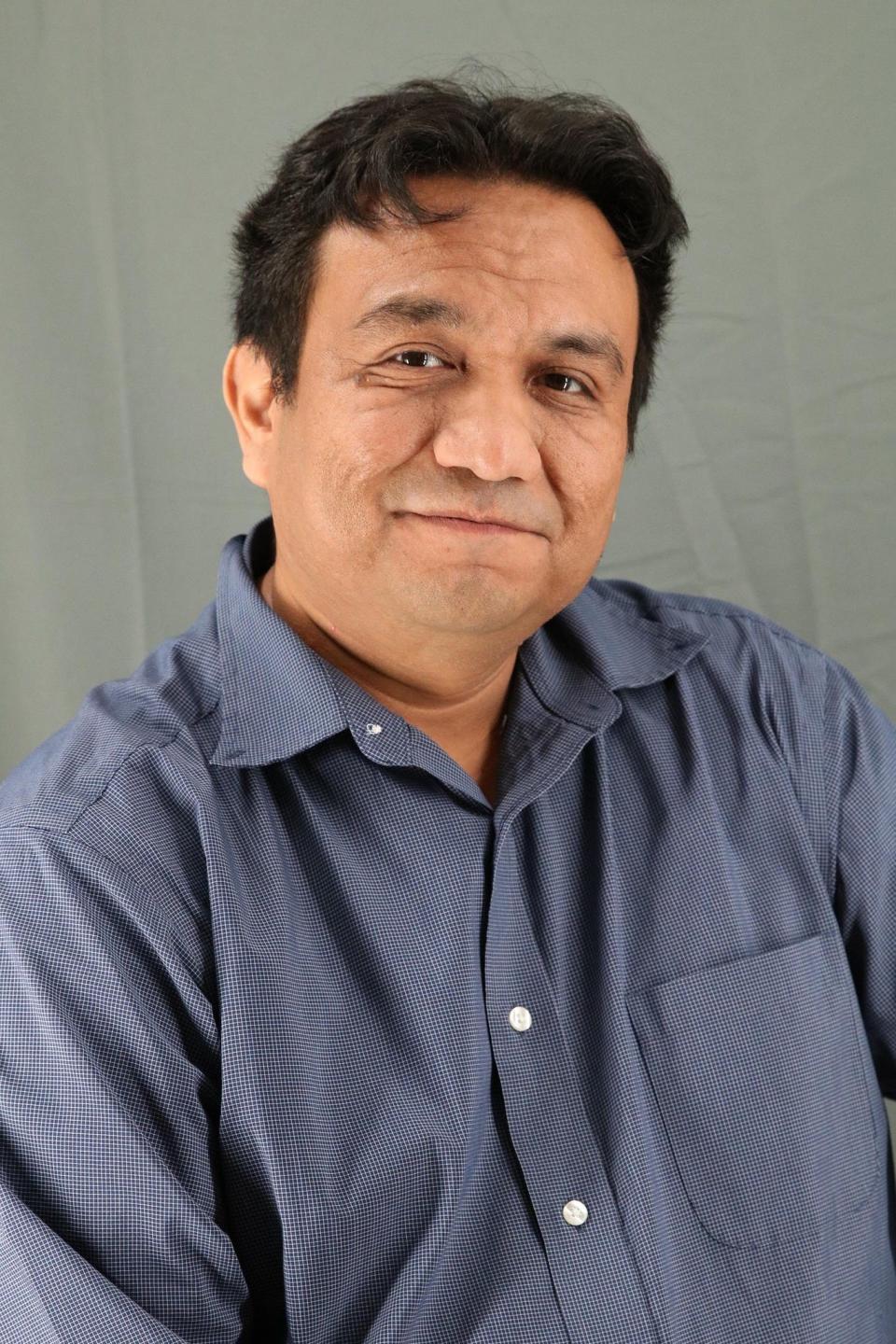
"Today's different because we have media makers who are able to justify the fact that this is possible. 'Reservation Dogs' is a prime example. ... There's less of an excuse that it can't happen today," said Tippeconnie, who worked in the lighting department on "Killers of the Flower Moon."
On set, Tippeconnie said he was conflicted: proud of the work that Oklahomans and Osages were doing, but with reservations because there was no Osage creative at the helm.
“Knowing Scorsese's filmography, I felt that if there was somebody that was going to approach this project on such a large scale and still take into consideration the community and the history and the details of the culture, he would be the person,” he said.
But "Killers of the Flower Moon" doesn't have "a monopoly on this history," he said.
In an interview with The Oklahoman before the Screen Actors Guild strike, Osage actor Yancey Red Corn said Scorsese was mentoring his son, Miles Thorpe Red Corn, who has written script for a TV series based on "A Pipe for February."
"This can be a stepping stone for someone else to make their own version, in contrast or in response. ... It feels like it might even be the time and maybe even the spark that puts an Osage filmmaker into the position where they get a budget that's unheard of," Tippeconnie said.
"That would be an ideal scenario, but I feel like that's a potential outcome."
This article originally appeared on Oklahoman: 'Killers of the Flower Moon' gets mixed reaction from Native audience
